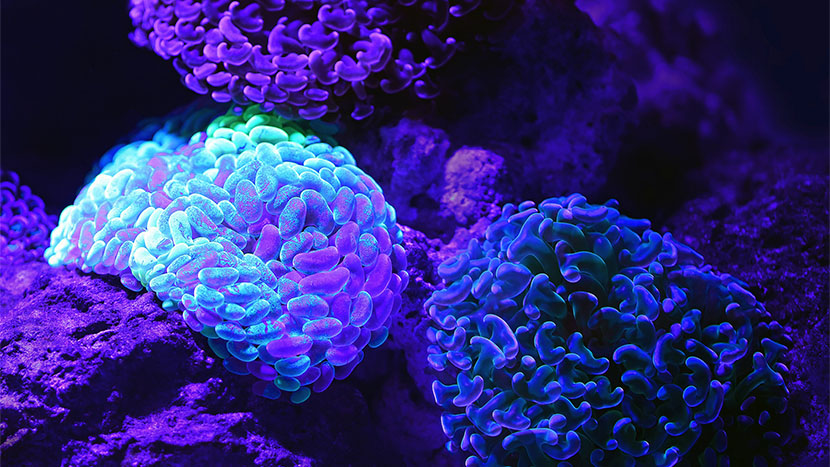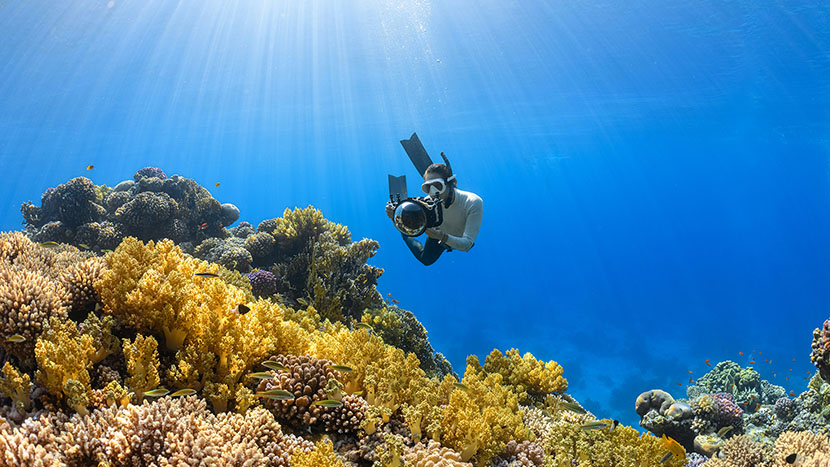Glowing Coral Reefs: Underwater Photography of Bioluminescent Marine Life
Beneath their dark and mighty depths, the oceans hold a multitude of secrets most people could never even imagine. One of those is the mesmerizing and otherworldly phenomenon of bioluminescence.
Among the many marine creatures that display this natural light show, from the surface to deep sea, some corals stand out for their breathtaking displays of glowing beauty.
Underwater photography of bioluminescent marine creatures is the perfect way to exhibit their beauty to those landlubbers who will never know the magnificence of what lies beneath the surface.
Here, we’ll shed some light on what bioluminescence is, how it works, and the best ways to capture it photographically. Behold the secret glow-in-the-dark coral reefs!
What is Bioluminescence?
Bioluminescence occurs when living organisms produce and emit light. This light is generated through a chemical reaction that occurs in specialized cells known as photocytes.
The main components in this reaction are luciferin (a light-producing substance) and luciferase (an enzyme). When luciferin reacts with oxygen, facilitated by luciferase, it produces light.
In the marine environment, bioluminescence serves various purposes. It can be a defense mechanism to confuse or deter predators, a means of communication between organisms, or a way to attract prey. Among the bioluminescent marine life, coral reefs offer some of the most stunning and diverse displays, with various corals, algae, and even some fish contributing to the underwater light show.
How Does Bioluminescence Work in Coral Reefs?
The bioluminescence in coral reefs primarily comes from the symbiotic relationship between corals and certain types of algae known as zooxanthellae. These algae reside within the corals’ tissues and contribute to their bioluminescent capabilities. The exact mechanisms can vary but often involve the algae producing bioluminescent compounds that the corals then display.
Additionally, some corals have their own bioluminescent proteins. These proteins can fluoresce under certain types of light, such as ultraviolet (UV) or blue light. When exposed to these light sources, the corals absorb the light in a specific color and emit it in another, a fluorescence that can range in color from greens and blues to reds and oranges.
The bioluminescence of coral reefs is not only a glorious visual spectacle but also plays a role in the health and survival of these ecosystems. The light emitted can attract symbiotic organisms, but a 2022 study indicates that it also serves as a colorful temptation to lure prey to the corals.
Capturing Bioluminescent Coral Reefs: Tips for Underwater Photography
Capturing the beauty of the bioluminescent coral reefs on film is a challenging but intensely rewarding nighttime endeavor. It is advisable to familiarize yourself with the site during daylight hours to identify markers that may help you if you get disoriented during the diving adventure.
These tips and strategies will help you capture mesmerizing underwater sights in a series of photographic masterpieces.
Use the Right Equipment
Experiencing bioluminescence requires either invisible ultraviolet or visible (blue) excitation light. You won’t need any filters for your camera or mask with UV light, but blue light is more effective at triggering the fluorescence. Some corals don’t glow at all under UV light.
Each photographer will have preferences regarding cameras, lenses, filters, light, and strobe options. A high-quality DSLR will give you the best shots. Use one with a high ISO range and good noise reduction capabilities. Other pieces of essential equipment include:
- A small torch to seek out the bioluminescent targets, which can double as a focus light
- A mask barrier filter to prevent the entire reef from looking blue
- A camera barrier filter (external or internal)
- A blue light video light or strobe with an excitation filter
A macro lens is the best choice for capturing detailed close-ups of bioluminescent corals. However, a wide-angle lens could also help photograph the broader scene.
Master Your Settings
The exact settings will vary according to the environment and strobe light strength. However, start with a high ISO setting to capture more light.
Be mindful of noise and adjust as necessary. You should have a relatively fast shutter speed and an aperture of F8. You can stop it down as you see how the camera picks up the corals’ glow. Autofocus will work well with fast-focusing lenses.
Photographic Techniques
Use a tripod or underwater housing with stabilizing features to minimize camera shake and motion blur.
You could do some light painting using a wide-angle lens by setting the camera up on a tripod, opening the shutter, swimming around, and lighting up different sections of the coral reefs to display their colors. Of course, you will have to make sure you stay out of the shot.
The easiest way to shoot glowing coral is using a macro lens, and it creates a stunning shot when a whole section lights up in neon colors at the shine of a torch.
Underwater photography is inherently different from capturing images on terra firma, but some compositional rules still apply. A great marine image should fill the frame. Move in as close as possible. The less water between the subject and the lens port, the sharper your image will be and the more vibrant the colors will be.
Although fluorescence is a reaction to blue light, bioluminescence may be sporadic and may require patience and skill to capture. Spend time observing the corals and learning their patterns of light emission. Experiment with various lighting angles and intensities to bring out the most impressive effects.
Post Production
The main problem you might experience when shooting glowing coral at night is increased noise in your images. This usually occurs from pushing the ISO too high. However, a slight adjustment of the luminance in-camera RAW will cut back on some of that noise, which is easy to do when editing your images.
Drawing the shadows down can deepen the blacks, helping hide background noise. The result will be photographs that you’ll want to add to your portfolio to share with the world.
Conclusion
Bioluminescent and fluorescent coral reefs offer a magical glimpse into the secret wonders of our oceans. These glow-in-the-dark beauties captivate all who have the privilege to witness them.
With the right equipment, techniques, and a bit of patience and creativity, underwater photographers can capture the enchanting glow of these reefs, preserving their beauty for all to see and appreciate.


































































































